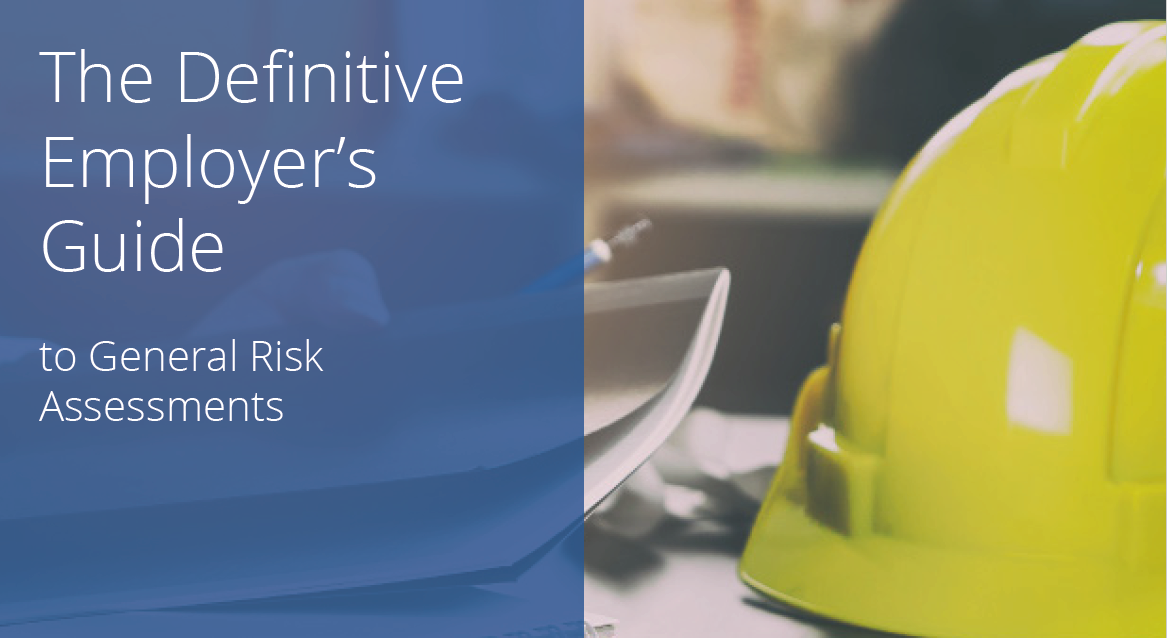FREE GUIDE
WorkNest’s Guide to Risk Assessments | 6 Simple Steps

Risk assessment is the cornerstone of good health and safety management. As well as being a legal requirement under the Management of Health and Safety at Work Regulations (MHSWR) 1999, risk assessment allows us to systematically examine the workplace with the aim of understanding potential causes harm to employees, customers, visitors and others. By identifying hazards, and establishing who may be harmed and how, action can then be taken to make the environment safer.
But there are many misconceptions around risk assessment, and this can cause businesses to over-complicate the task or miss the mark, compromising their effectiveness.
Download our free risk assessment guide
If you’re not sure where to start, download our straightforward risk assessment guide. In it, our Health & Safety specialists break down everything you need to know to conduct a meaningful risk assessment. We share our simple six-step approach and answer common risk assessment queries so that you can approach this task with confidence.
The main objective of risk assessment at work is to decide what steps you need to take to comply with health and safety law. In this way, understanding how to conduct a risk assessment is fundamental to overall health and safety management – which is why we have created this practical guide.
This risk assessment guide is just one of the ways Ellis Whittam is committed to helping employers fulfil their legal obligation to protect the health, safety and wellbeing of everyone affected by your organisation’s activities. Like everything we do, it is also intended to help you save time, cut through the confusion and prevent costly mistakes.
The Definitive Employer’s Guide to General Risk Assessment
Created by our team of highly-qualified consultants, this threat and hazard identification and risk assessment guide provides an contains everything you need to know to conduct a robust risk assessment of your workplace.
What's included in our risk assessment pdf
What does risk assessment involve? And how do you properly carry one out?
Rather than trawl the internet, this comprehensive and easy-to-follow risk assessment guide has been produced as a tool to assist employers in drawing up a General Risk Assessment. In it, you will learn:
- Why you need to risk assess your workplace (your duties under the MHSWR)
- Who should carry out a risk assessment
- The objectives of a risk assessment
- The different types of risk assessment (‘qualitative’ versus ‘quantitative’)
- What a risk assessment needs to include to be ‘suitable and sufficient’
- The step-by-step process you need to follow
- Different categories of hazards
- The difference between General Risk Assessments and Specific Risk Assessments
- The difference between a hazard and a risk
- Key terms, including ‘near miss’, ‘dangerous occurrence’ and ‘reasonably practicable’
We also share expert tips on good practice and avoiding common mistakes.
Related Content
Do you need support?
Speak to us for an honest, no obligation chat on:
0345 226 8393 Lines are open 9am – 5pm
Why our risk assessment guide is beneficial to businesses
All businesses have a legal duty to risk assess their environment. But unless you live and breathe health and safety on a daily basis, this can be a daunting and time-consuming task.
It’s absolutely essential that risk assessment is done right. After all, the vast majority of serious safety incidents can be traced back to risk assessment failings and could have been easily avoided had hazards been spotted and dealt with. This is why health and safety law assumes that employers are guilty until proven innocent.
With fines for health and safety breaches now unlimited, risk assessment is key to protecting your people, your reputation and your bottom line. Not only can risk assessing your workplace help to proactively prevent accidents from occurring in the first place but, if they do, you will be better able to defend your position and stand up to regulator scrutiny by demonstrating the steps you took to keep people safe.
So don’t risk falling short – download our free risk assessment guide now.
Let Ellis Whittam do the hard work for you
If you’re not confident undertaking risk assessments yourself and would like more hands-on help, our fixed-fee Health & Safety service includes:
- 24/7 advice and support from a named professional, including help formulating risk assessments and guidance on appropriate control measures;
- An on-site health and safety audit (General Risk Assessment) to identify any areas where you currently fall short of requirements and help you become compliant;
- Award-winning health and safety software which enables you to build your own risk assessments and monitoring checks, and view your risk status in real time;
- Much more.
For more information, call us on 0345 226 8393 or request your free consultation using the button below.
The Richard Pate School
Sign up for the latest news & insights
Resources
Latest News & Insights

Changes to day one unfair dismissal rights | New six-month protection explained
BLOG Written by Patrick Carroll-Fogg on 1 December 2025 Of the almost 75 individual tweaks and changes set to be introduced under the Employment Rights

Breaking down the Budget 2025 for employers
BLOG Written by Daniel Rawcliffe on 27 November 2025 The recently announced UK Budget 2025 is a challenging one for small businesses. While it covers

AI for interviews with job candidates | Balancing technology with a human touch
BLOG Written by Danielle Fargnoli-Read and Tracey Burke on 21 November 2025 AI is reshaping the way UK businesses approach hiring, offering benefits such as

Workplace risks revealed | HSE 2024/25 report shows rising injuries and ill health
BLOG Written on 21 November 2025 Providing a safe, healthy workplace should be a top priority for all employers. But how well are workplaces actually

CQC under scrutiny | Inspection gaps highlight need for compliance readiness
BLOG Written on 12 November 2025 A recent BBC article highlighted that the Care Quality Commission (CQC) failed to routinely inspect a service previously rated

Duty to prevent sexual harassment | Almost half of UK businesses aren’t compliant
BLOG Written on 11 November 2025 Almost a year since the Worker Protection Act 2024 came into force, new research from our team at WorkNest

Unconscious bias in the workplace | Lessons from The Celebrity Traitors
Blog Written by Andrew Moore on 7 November 2025 The Celebrity Traitors has had us all hooked. While we tune in for the twists, betrayals

Best interview techniques for employers | 5 simple strategies for success
BLOG Written by Danielle Fargnoli-Read on 22 October 2025 The interview process hasn’t changed much in decades – and candidates can tell. Recycled questions, rigid

What happens if an employee resigns during the disciplinary process?
Bridging the growing gap between employers and today’s job seekers.


